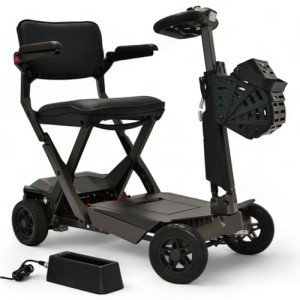Mobility Scooters: A Comprehensive Guide
Mobility scooters have actually ended up being a necessary mode of transportation for lots of people dealing with mobility challenges. This article checks out the various aspects of mobility scooters, including their types, advantages, functions, and a guide for prospective purchasers.
Understanding Mobility Scooters
Mobility scooters are electrically powered gadgets designed for people with limited mobility. They supply a means of transport for people who may have trouble walking however still want to retain their self-reliance. They are available in numerous styles and functions to accommodate a large range of needs.
Types of Mobility Scooters
Mobility scooters can typically be classified into 3 main types:
| Type | Description | Best For |
|---|---|---|
| Compact Scooters | These are small and lightweight, perfect for inside your home and short trips. | Users with restricted storage space or those who travel frequently. |
| Mid-size Scooters | A balance in between portability and stability, appropriate for both indoor and outdoor use. | Those who require to cover a range of surfaces. |
| Heavy-duty Scooters | Large and robust, created for rugged outdoor use and much heavier people. | Users requiring additional weight capacity or going off-road. |
Key Features of Mobility Scooters
The choice of mobility scooter often depends upon the functions that line up with private needs. Here are some of the essential features to consider:
- Weight Capacity: Mobility scooters include different weight limitations. It is important to select a scooter that can properly support the user's weight.
- Variety: The distance a scooter can take a trip on a single charge varies. Depending upon user requirements, one might select scooters with a series of approximately 40 miles.
- Speed: Most mobility scooters can reach speeds between 4 to 8 mph. Consider what speed is comfy and safe for the desired environment.
- Turning Radius: A compact turning radius is vital for indoor usage, enabling easier navigation in tight spaces.
- Battery Type: The kind of batteries used can affect the scooter's performance. Lead-acid and lithium-ion batteries are the most typical.
Advantages of Using Mobility Scooters
The advantages of mobility scooters extend beyond simply transport. Some key benefits consist of:
- Independence: Users can browse their environment without depending on caretakers, promoting independence and confidence.
- Health Benefits: Using a scooter can motivate outdoor activity, causing physical and psychological health enhancements by reducing feelings of seclusion.
- Convenience: Scooters can quickly be run in numerous environments, whether inside your home, in shopping malls, or outdoors.
Crucial Considerations When Buying a Mobility Scooter
When acquiring a mobility scooter, a number of considerations can help make sure that you pick the best design:
Assess Individual Needs:
- Mobility level: Consider how much help the person will require.
- Variety of use: Determine where the scooter will mostly be utilized (inside, outdoors, on rough terrains, etc).
Test Drive:
- Always test drive several models to discover a suitable fit. Pay attention to comfort, ease of steering, and the scooter's responsiveness.
Evaluation Safety Features:
- Look for scooters with sufficient safety functions like lights, indicators, and anti-tip styles.
Examine Warranty and Service Options:
- A trusted service warranty and offered service options are essential for long-term usage.
Frequently Asked Questions about Mobility Scooters
1. How fast do mobility scooters go?Mobility scooters normally have speeds varying from 4 to 8 mph, with most created for security rather than high-speed travel. 2. Are there weight constraints on mobility scooters?Yes, mobility
scooters feature particular weight limits, frequently varying from
250 lbs to over 500 lbs, depending on the design. 3. Can mobility scooters be used indoors?Certain designs, especially compact scooters, are particularly created for
indoor usage and are much easier to steer in tight areas. 4. How frequently do the batteries need to be replaced?Battery life can differ based upon use, however usually, with proper care, batteries might last between 1 to 3 years before needing replacement
. 5. Are mobility scooters covered by insurance? willandon.top can differ, however some insurance coverage strategies, consisting of Medicare and Medicaid, might cover part of the cost. It's advised to inspect with specific insurance providers. Mobility scooters function as a
important tool for many individuals, allowing them to keep
their flexibility and self-reliance. By understanding the different types and features of mobility scooters, individuals can make educated choices customized to their specific needs.
Whether used for errands, interacting socially, or leisurely activities, mobility scooters can enhance the lifestyle for those with mobility restrictions. Buying a mobility scooter is a decision that can substantially impact a person's every day life. Therefore, people must thoroughly assess their alternatives and choose a model that best aligns with their lifestyle and mobility requirements
.

